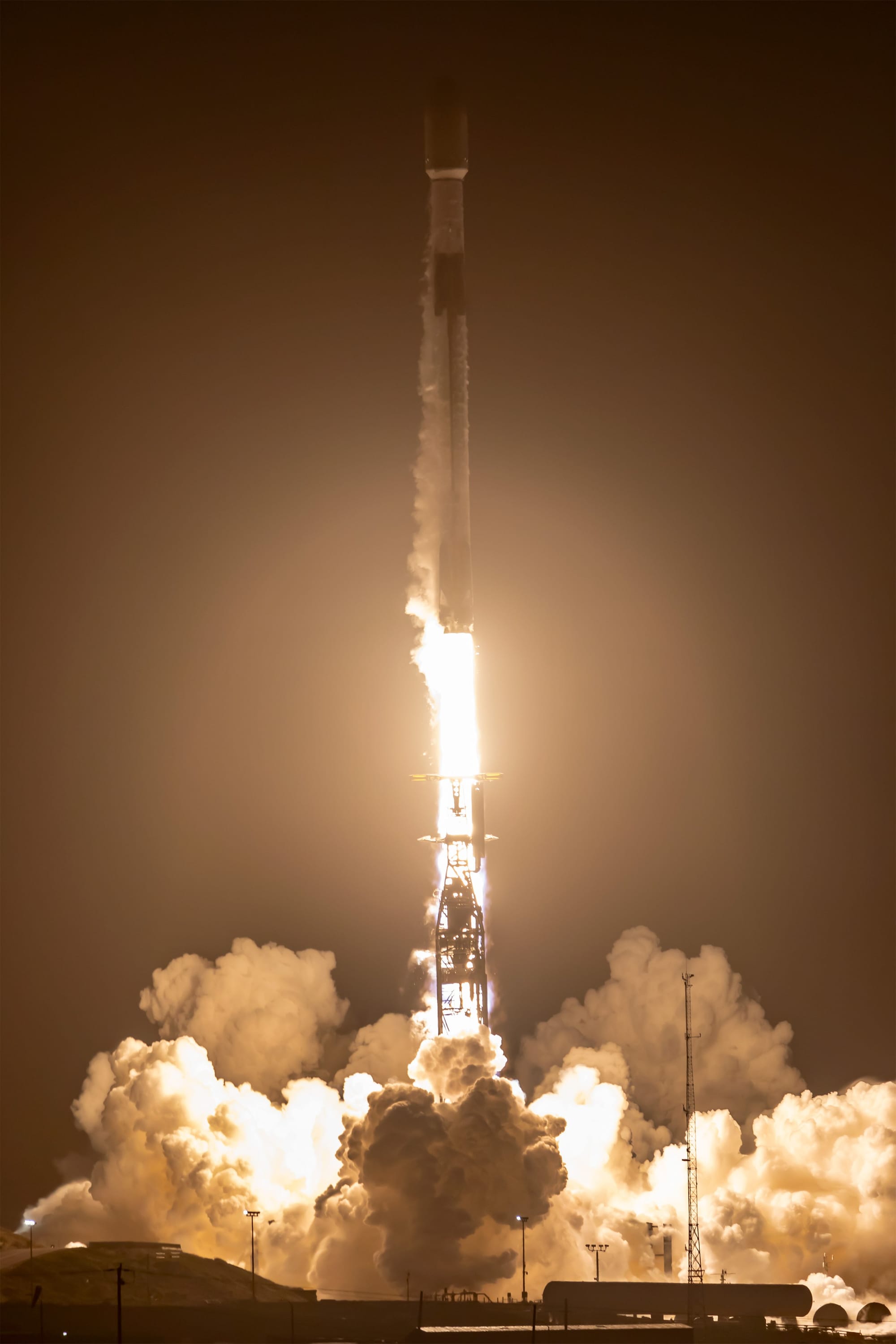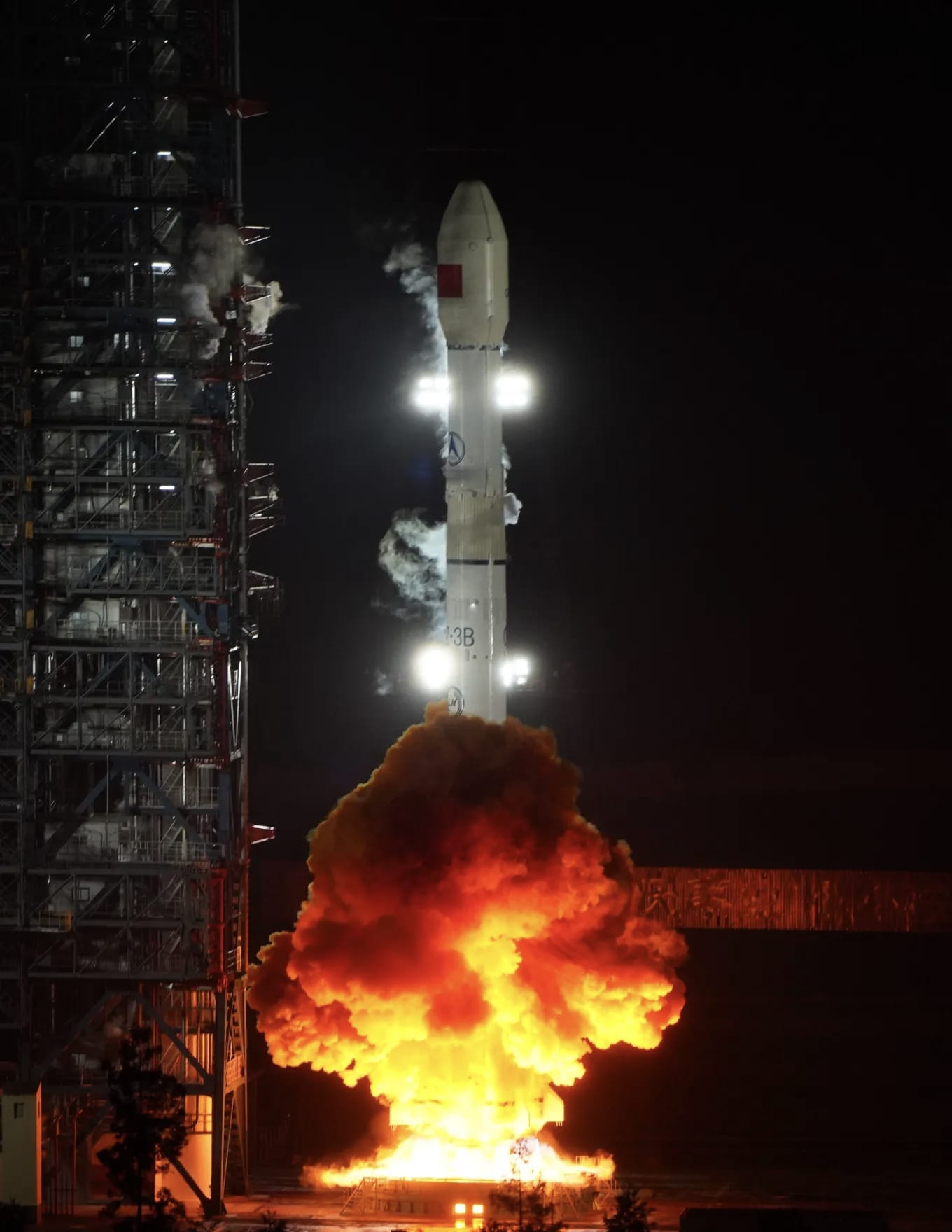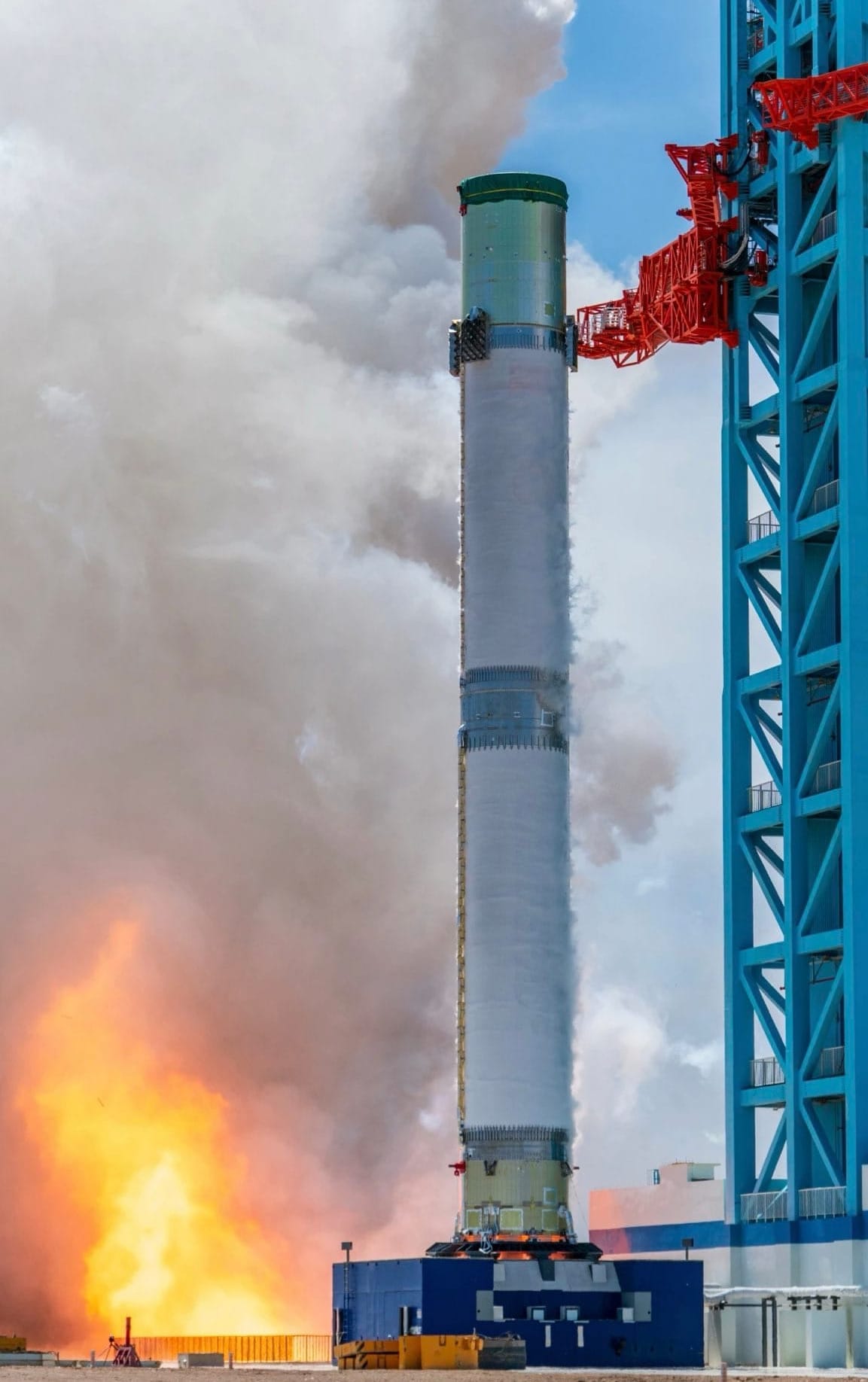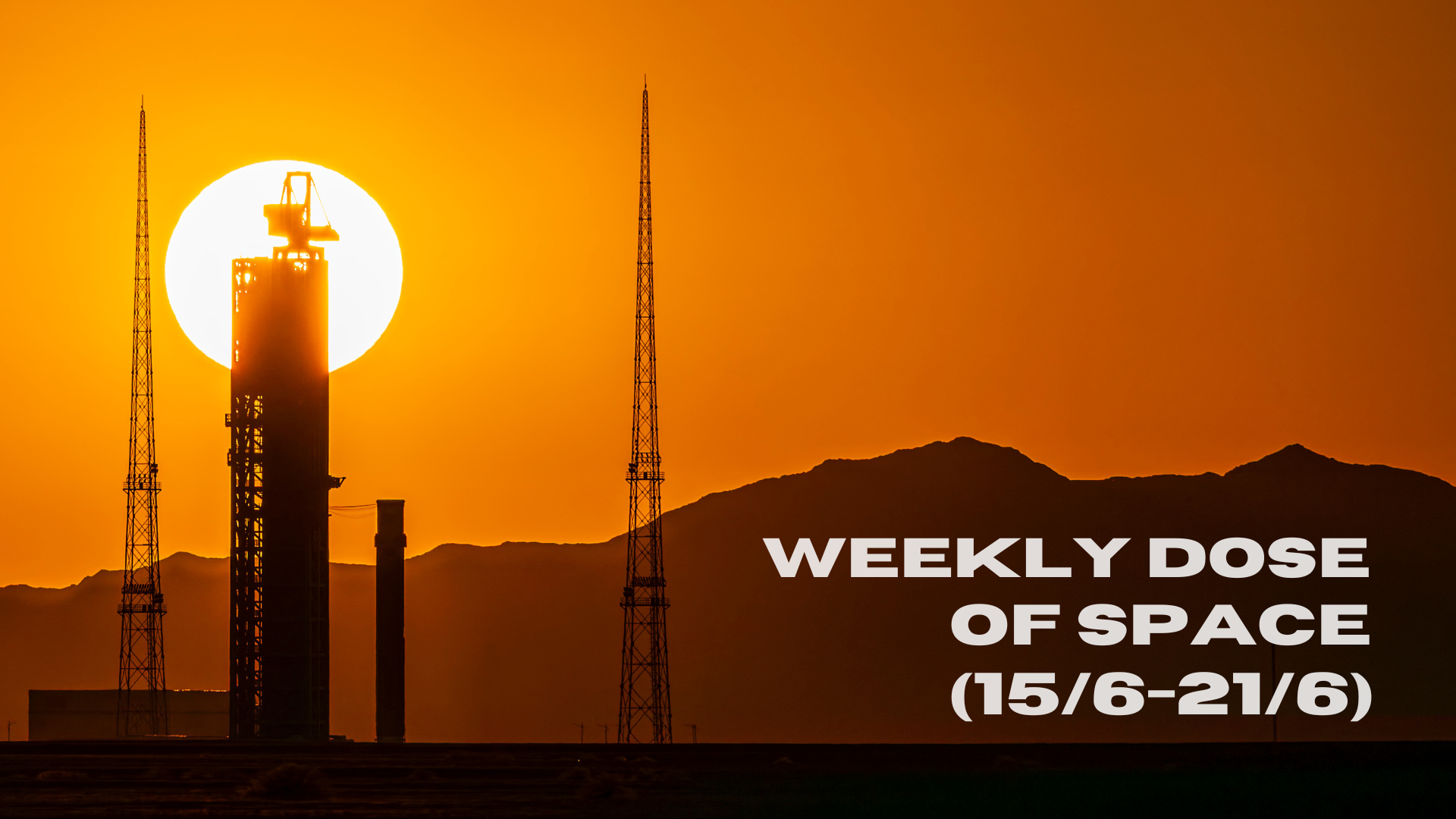Table of Contents
Welcome back to Weekly Dose of Space! This week saw four launches globally, with an even split between low Earth and geostationary orbit missions. News of the week saw China performing tests of its new crewed spacecraft, Honda performing a rocket hop, and Zhuque-3 firing up! As always, we'll also look ahead to what the worldwide launch schedule might look like next week.
Launches This Week
June 17th - Falcon 9 with Starlink Group 15-9
A Falcon 9 lifted off from Space Launch Complex 4E, in California, carrying twenty-six Starlink satellites into low Earth orbit. Supporting this mission was booster B1093, making its third flight, and landing on the drone ship 'Of Course I Still Love You' downrange.

June 18th - Falcon 9 with Starlink Group 10-18
Another twenty-eight Starlink satellites were sent to low Earth orbit by a Falcon 9 flying from Space Launch Complex 40, in Florida. Booster B1090 supported this mission for its fifth flight, with a downrange landing on the drone ship 'Just Read The Instructions'.

June 19th - Angara-A5 with an unknown payload
An Angara-A5 flew for what is believed to be its first operational flight from the Plesetsk Cosmodrome. The payload atop of the rocket is unknown, possibly a military satellite, but heading toward geostationary orbit.
More Angles pic.twitter.com/weDjSyyGqG
— afec7032 🇷🇺 (@robert_savitsky) June 19, 2025
Angara-A5 lifts off from the Plesetsk Cosmodrome on June 19th, via robert_savitsky on Twitter.
June 20th - Long March 3B/E with ChinaSat-9C
A Long March 3B/E blasted off from the Xichang Satellite Launch Center, for the rocket's ninth flight of the year, carrying ChinaSat-9C to a geostationary transfer orbit. ChinaSat-9C is planned to replace ChinaSat-9, currently residing over China, along with its radio, television, and communication services.

In Other Space News
China's Mengzhou completes abort test

On June 17th, China took another step toward the Moon for its crewed lunar program with the launch pad abort test of the Mengzhou capsule at the Jiuquan Satellite Launch Center.
The test saw the capsule sever connections to a dummy service module and ignite the launch escape system, pulling the vehicle skyward for twenty seconds. After which the escape system separated. Free of the escape system, Mengzhou gradually rocked toward a stable descent angle before deploying two drogue parachutes to slow it enough to release the three large main parachutes.
Under the main parachutes, the capsule's heat shield was released to allow airbags underneath it to inflate. Two minutes after the launch escape system had ignited, Mengzhou touched down and awaited retrieval by recovery and test teams.
This test was regarded as a success by the China Manned Space Agency, which shared:
“Mengzhou spacecraft system assumes the overall function of escape and is fully responsible for the two tasks of escape and life-saving. Through the test, the escape life-saving subsystem and related large systems of the Mengzhou manned spacecraft were comprehensively assessed, and the correctness and matching of the design of escape timing, escape separation, escape ballistic closed-loop control were verified, and the escape real flight parameters were obtained.”
Later in the year, Mengzhou is expected to complete an in-flight abort test, likely on a customer vehicle akin to NASA’s Orion in-flight abort test, either at Jiuquan or the Wenchang Space Launch Sites.
LandSpace fires up Zhuque-3

LandSpace, one of China's leading commercial rocket firms, fired up its reusable stainless steel Zhuque-3 first-stage booster on June 20th on its launch pad at Jiuquan for a static fire, one of the few remaining tests ahead of the launch vehicle's debut flight.
For the static fire, the booster was fully loaded with liquid methane and liquid oxygen, to mimic its conditions at liftoff and to weigh the stage down, before its nine TQ-12A engines ignited. Once ignited, the nine engines burned together for forty-five seconds, generating around 769 tons of thrust.
This test was hailed as a success, verifying control systems for the nine engines, ensuring they’re generating the same level of thrust, starting up and shutting down at the same time, and gimbaling as wanted, as well as the first-stage’s structure, tank pressurization, and avionics. As such, following the test LandSpace stated:
“This test is not only a comprehensive system exercise that is highly close to the flight state, but also a powerful verification of LandSpace's overall integration capabilities in the research and development of liquid oxygen and methane launch vehicle propulsion systems. It marks that China's liquid rocket propulsion system has achieved important breakthroughs in key technologies such as multi-engine synchronous start-up, multi-engine propellant distribution and combustion stability. It also lays a solid foundation for the upcoming maiden flight of the Zhuque-3 reusable rocket and the engineering of China's reusable launch vehicle technology.”
LandSpace is hoping to fulfill an ambitious year with Zhuque-3 in 2025, targeting three flights and the landing of a first-stage, along with twelve flights in 2026 if all goes as planned this year.
Honda performs reusable rocket test
再使用型ロケット実験機の
— Honda 本田技研工業 (@HondaJP) June 17, 2025
離着陸実験に成功 🎉
本日、自社開発の再使用型ロケットの実験機を用いて、Honda初となる高度300mまでの離着陸実験を行いました。
今回の成功により、再使用型ロケットの研究段階を一歩進めることができました!… pic.twitter.com/IGxMxZ5RyN
Honda's reusable rocket performing its June 17th test, via Honda on Twitter.
In a surprise entry for reusable rocket development, Honda, best known as an automaker, performed a hop test on June 17th with a small rocket in Hokkaido Prefecture, Japan. The vehicle used for the test was developed by the company and stood 6.3 meters in height, 85 centimeters in diameter, while weighing 1,312 kilograms fully fuelled (900 kilograms without).
For the test, Honda's experimental reusable rocket flew for 56.6 seconds and reached a height of 271.4 meters. The landing saw the vehicle touch down 37 centimeters from its target. Additionally, in a rare occurrence for reusable rocket tests, the vehicles' landing legs tucked into the vehicle after liftoff and redeployed before landing (usually landing legs are fixed in place or a vehicle is launched from a stand with legs deployed for landing).
According to Honda, this test demonstrated key technologies essential for rocket reusability, such as flight stability during ascent and descent, as well as landing capabilities. Global Chief Executive Officer of Honda, Toshihiro Mibe, commented on the test, saying:
"We are pleased that Honda has made another step forward in our research on reusable rockets with this successful completion of a launch and landing test. We believe that rocket research is a meaningful endeavor that leverages Honda’s technological strengths. Honda will continue to take on new challenges—not only to offer our customers various services and value through our products, while addressing environmental and safety issues, but also to continue creating new value which will make people’s time and place more enjoyable."
What to Expect Next Week
June 22nd - Starlink Group 10-23
From Space Launch Complex 40, a Falcon 9 is expected to send twenty-seven Starlink satellites to low Earth orbit.
June 22nd - New Shepard with NS-33
Blue Origin is planning to fly New Shepard's suborbital NS-33 mission from its West Texas launch site, carrying Allie Kuehner and her husband, Carl Kuehner, Leland Larson, Freddie Rescigno, Owolabi Salis, and James Sitkin.
June 22nd - Falcon 9 with Transporter-14
SpaceX is preparing to fly its fourteenth Transporter sun-synchronous orbit small satellite rideshare mission with a Falcon 9 from Space Launch Complex 4E.
June 23rd - Atlas V with KA-02
United Launch Alliance is preparing to launch Amazon's second group of twenty-seven Kuiper satellites to low Earth orbit to build the space-based internet mega-constellation.
June 25th - Falcon 9 with Starlink Group 10-34
Another batch of Starlink satellites is planned to head to low Earth orbit via a Falcon 9 from Space Launch Complex 40.
NET coming week? - Falcon 9 with Axiom-4
SpaceX is expecting to launch the Axiom-4 mission on a Crew Dragon spacecraft, carrying Peggy Whitson from the U.S., Shubhanshu Shukla from India, Sławosz Uznański from Poland, and Tibor Kapu from Hungary, to the International Space Station atop of a Falcon 9 from Launch Complex 39A.







